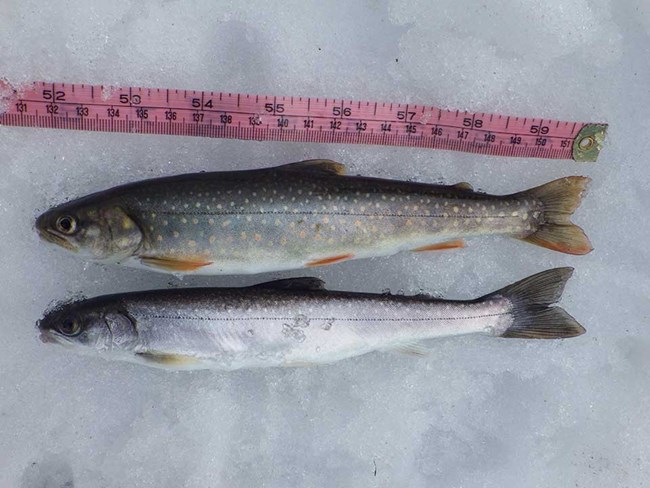Last updated: October 26, 2021
Article
Ecological Factors Related to Mercury in Dolly Varden

Assessing the influence of migration barriers and feeding ecology on total mercury concentrations in Dolly Varden (Salvelinus malma) from a glaciated and non-glaciated stream
Abstract
Assimilation of mercury (Hg) into food webs is directly influenced by ecological factors such as local habitat characteristics, species feeding behavior, and movement patterns. Total Hg concentrations ([THg]) in biota from Subarctic latitudes are driven both by broad spatial processes such as long-range atmospheric transport and more local influences such as biovectors and geology. Thus, even relatively pristine protected lands such as national parks are experiencing Hg accumulation. We analyzed [THg] and stable isotopes of carbon (δ13C) and nitrogen (δ15N) in 104 Dolly Varden (Salvelinus malma) collected from two rivers in southeastern Alaska, upstream and downstream of apparent anadromous migration barriers in watersheds with and without glacial coverage. To assess the potential magnitude of marine-derived THg returning to freshwater, we analyzed [THg] in ten adult pink salmon from each study system. There were no differences in Dolly Varden mean [THg] between sites after the data were standardized for fork length, but unadjusted [THg] varied relative to fish size and δ15N values. While previous studies generally show that [THg] increases with higher δ15N values, we found that Dolly Varden below migration barriers and foraging on salmon eggs had the highest δ15N values among all sampled individuals, but the lowest [THg]. Dolly Varden residing below anadromous barriers had δ13C values consistent with marine influence. Since salmon eggs typically have low [Hg], our results suggest that abundant salmon populations and the dietary subsidy they provide may reduce the annual exposure to [Hg] in egg-eating stream fishes such as Dolly Varden. In addition to identifying a suitable species for freshwater Hg monitoring in southeastern Alaska, our study more broadly implies that river characteristics, location within a river, fish size, and feeding ecology are important factors influencing Hg accumulation.
Cyr, A., C. J. Sergeant, J. A. Lopez, and T. O’Hara. 2016. Assessing the influence of migration barriers and feeding ecology on total mercury concentrations in Dolly Varden (Salvelinus malma) from a glaciated and non-glaciated stream. Science of the Total Environment.
